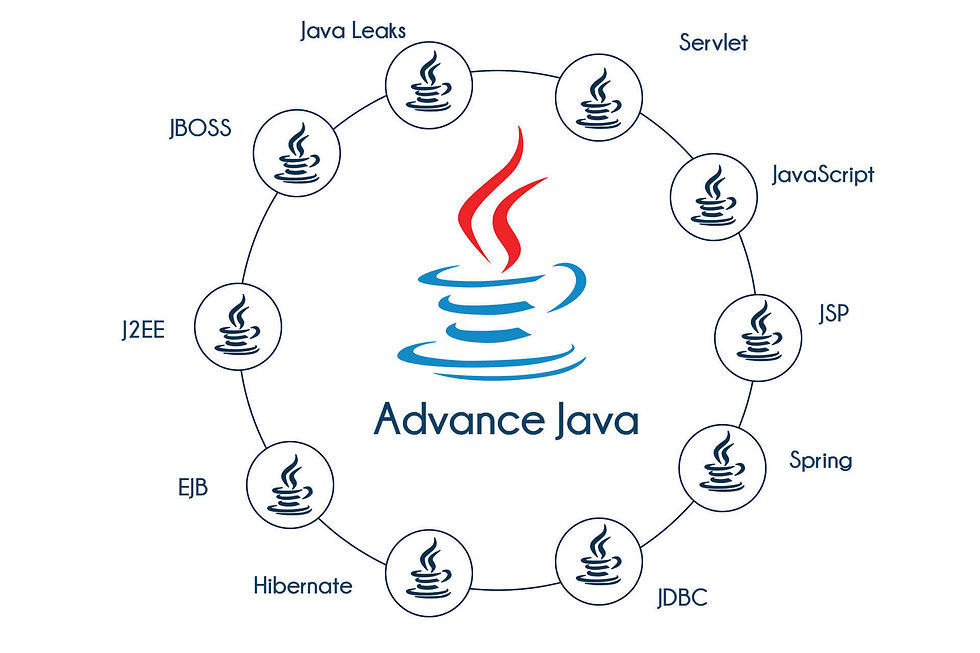The Java Revolution: A Deep Dive into the Latest Trends and Innovations
- Vaishali pal

- Feb 15, 2024
- 3 min read
Introduction:
In the ever-evolving landscape of programming languages, Java continues to stand tall as a robust and versatile platform. With its longevity and adaptability, Java has undergone a series of revolutions, constantly embracing new trends and innovations to stay relevant in the fast-paced world of technology. In this blog post, we will explore the latest trends and innovations that are shaping the Java landscape.

Java 17 and LTS Releases:
Java 17, the latest long-term support (LTS) release, marks a significant milestone in Java's journey. LTS releases provide stability and support for an extended period, catering to enterprises with long-term projects. Developers are now leveraging the enhanced features and performance improvements offered by Java 17, reinforcing its position as a reliable and forward-looking language.
Project Loom:
Concurrency has always been a hot topic in the world of programming, and Project Loom is Java's response to simplifying and enhancing concurrent programming. By introducing lightweight, user-mode threads known as fibers, Loom aims to make it easier for developers to handle concurrency, making Java applications more scalable and efficient.
Adoption of Microservices Architecture:
Microservices architecture has gained immense popularity for building scalable and maintainable applications. Java, with its modular structure and support for frameworks like Spring Boot and Micronaut, is at the forefront of this trend. Developers are increasingly adopting microservices to build agile and resilient systems, and Java is a natural fit for these distributed architectures.
Quarkus and GraalVM:
Quarkus, a Kubernetes-native Java framework, and GraalVM, a high-performance runtime, are transforming the way Java applications are developed and deployed. Quarkus enables the creation of lightweight and fast-booting applications, ideal for cloud-native environments. GraalVM, on the other hand, provides ahead-of-time compilation, resulting in faster startup times and reduced memory footprint. Together, these technologies are pushing Java into the modern era of cloud-native development.
Reactive Programming with Project Reactor:
With the growing demand for responsive and resilient applications, reactive programming has gained prominence. Project Reactor, an open-source reactive programming library, has become a key player in the Java ecosystem. By introducing reactive streams and providing tools for building asynchronous, non-blocking applications, Project Reactor empowers developers to create highly responsive and scalable systems.
Integration of Machine Learning with Deeplearning4j:
Java's reach extends beyond traditional software development into the realm of artificial intelligence and machine learning. Deeplearning4j, a deep learning library for Java, enables developers to build robust machine learning models seamlessly integrated with Java applications. This integration is paving the way for Java developers to explore and contribute to the exciting field of AI.
Conclusion:
As we delve into the latest trends and innovations within the Java ecosystem, it becomes evident that Java is not just surviving but thriving in a dynamic technological landscape. From the introduction of new language features in Java 17 to the revolutionary Project Loom and advancements in cloud-native development with Quarkus and GraalVM, Java continues
to reinvent itself. For those looking to embark on a journey into the Java universe and stay abreast of these exciting developments, investing in education is paramount. Enrolling in the best Java Course in Mumbai, Agra, Thane, Vadodara, Delhi, Noida can provide aspiring developers with the knowledge and skills needed to navigate the evolving Java landscape effectively. These courses often cover the latest trends, tools, and best practices, empowering individuals to leverage Java's full potential in their projects.